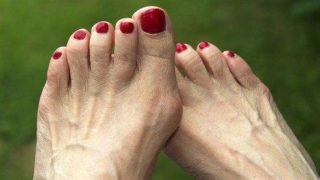Bunion Treatment Without Surgery, Causes & Prevention
The Problem
A bunion is a bony deformity of the joint at the base of the big toe. The medical name is hallux valgus. Bunions develop slowly. Pressure on the big toe joint causes the big toe to lean toward the second toe.
Over time, the normal structure of the bone changes, resulting in the bunion bump. This deformity will gradually increase and may make it painful to wear shoes or walk.
Anyone can develop a bunion, but they’re more common in women than men. This may be because of the style of footwear that women wear.

Treatment options vary depending on the severity of your bunion and the amount of pain it causes.
Treatment
Dr. foot offers surgical and non-surgical treatment for bunion
- Conservative treatment
However, these can only help to reduce the symptoms of bunions, such as pain. They don’t improve the appearance of your foot. that may relieve the pain and pressure of a bunion include:

- Changing shoes.Wear roomy, comfortable shoes that provide plenty of space for your toes.
- Padding and taping or splinting.Use over-the-counter, no medicated bunion pads. Also, your doctor can help you tape your foot in a normal position. This can reduce stress on the bunion and alleviate your pain.
- Acetaminophen (Tylenol, others), ibuprofen (Advil, Motrin IB, others) or naproxen sodium (Aleve) can help you control the pain of a bunion. Cortisone injections also might help.
- Shoe inserts.Padded shoe inserts can help distribute pressure evenly when you move your feet, reducing your symptoms and preventing your bunion from getting worse. Over-the-counter arch supports can provide relief for some people; others require prescription orthotic devices.
- Applying ice.Icing your bunion after you’ve been on your feet too long or if it becomes inflamed can help relieve soreness and inflammation.
- General physiotherapy for bunion
- Pain Relief. Minimis Swelling & Injury Protection Pain is the main reason that patients seek treatment for a bunion. Inflammation is best eased using ice therapy, techniques (e.g. soft tissue massage, acupuncture, unloading taping techniques) or exercises that unload the inflamed structures. Anti-inflammatory medications may help. Orthotics can also be used to offload the bunion.
- Restoring Normal ROM & Posture As pain and inflammation settles, the focus of treatment turns to restoring normal toe and foot joint range of motion and muscle length.
- Restore Normal Muscle Control & Strength A foot posture correction Program to assist you to regain your normal foot posture.
- Restoring Full Function,the goal of this stage of rehabilitation is to return the patient to his/her desired activities. Everyone has different demands for their feet that will determine what specific treatment goals need to be achieved.
- Surgical options
If conservative treatment doesn’t provide relief from your symptoms, you might need surgery. The type of surgery will depend on the level of deformity, the severity of your symptoms, your age, and any other associated medical conditions.
However, surgery isn’t recommended unless a bunion causes you frequent pain or interferes with your daily activities.
There are numerous surgical procedures for bunions, and no one technique is best for every problem.
Referral will be provided when necessary
Surgical procedures for bunions might involve:
- Removing the swollen tissue from around your big toe joint
- Straightening your big toe by removing part of the bone
- Realigning the long bone between the back part of your foot and your big toe, to straighten out the abnormal angle in your big toe joint
- Joining the bones of your affected joint permanently
It’s possible that you’ll be able to walk on your foot immediately after a bunion procedure. However, full recovery can take weeks to months.
To prevent a recurrence, you’ll need to wear proper shoes after recovery. For most people, it’s unrealistic to expect to wear narrower shoes after surgery.


